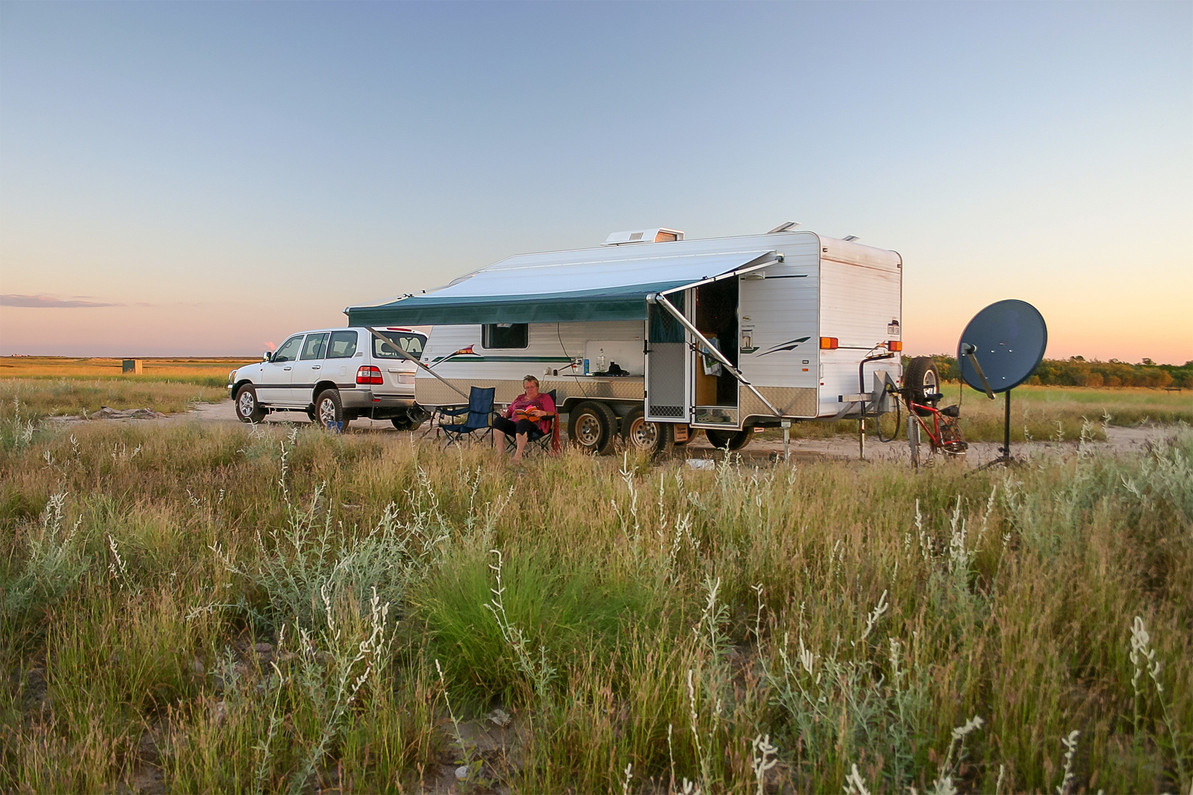Cleaning Your Awning
Outsiders to the recreational vehicle lifestyle may look at an RV and think, ‘oh this is just a bigger version of a truck that just has some nice amenities. If you’re an owner, you know better. You understand that owning an RV takes a lot of work, consideration, and yes, sometimes, even courage. There’s a lot to contend with as an owner of a recreational vehicle. Like your own “sticks and bricks” home your RV is a living and breathing entity. It takes some serious love for the lifestyle to take on RV ownership.
So, now, you have to ask yourself how important is the health of your RV? Whether you’re part-time or full-time the answer should be “very”. There is a lot of continual upkeep that has to happen to keep your RV on the road for all (or part) of the year. There are many parts that require a lot of attention. The roof, engine, and seals are always at the forefront of many owners’ minds. But what about the parts that need your attention and are forgotten? Drip channels, lighting, and trim fall into this category. But there are parts of your RV that are forgotten that see a lot of use. Your awning is one of those.
The awning is a major component of your recreational vehicle that is constantly exposed to the elements. Whether it’s cold weather, warm weather, high or low winds, while you’re comfortably inside of your RV, your awning is outside taking a beating. Even if you have it rolled-up, temperature fluctuation and water penetration both take a toll on what is effectively your RV’s sun room. When your coveted canopy takes that much abuse, it can start to show wear and tear.
One of the major culprits of awning damage and discoloration is water infiltration. It can be particularly egregious with acrylic awnings because they have a porous surface and tightly-woven mesh construction. While this is great for airflow, it means mildew and the resulting staining can set in much deeper than with the other primary awning material; vinyl. Vinyl will still stain with enough exposure (and improper storage), but you’ll have better luck with it as awning material because of its ability to naturally inhibit the growth of mildew.
The first step to caring for your awning is prevention. If you take a few precautionary steps with your awning, regardless of the material, you will get longer life and better-looking material.
1.Don’t store it wet – This cannot be stressed enough. This is one of the, if not the biggest “no-no” in RV awning care. The majority of your cleaning and wear-and-tear issues could be solved by having the patience to store your awning dry. If you roll it up while it’s wet (either after a long rain or a thorough cleaning) you can stain your awning and ultimately damage the material and the mechanical pieces.
2.Knock off the debris – Whether it’s your slide-out cover or your awning you will need to make sure that before you retract it, you will need to knock the debris off the top. While a few leaves won’t destroy your roll-out awning, they will wear on the fabric and definitely create an environment where staining and mildewing could occur. With your slide-out awnings, debris could be especially problematic. If you retract the awning and there’s any debris at all, you could quickly tear up the seal. A torn up seal is expensive enough to replace. An entire slide-out ruined because of water infiltration is a whole new level of expense.
3. Roll it out – This is an easy one. Your awning isn’t a magical waterproof unicorn. If you’re rolling down the road and you hit a rainstorm or two, you can be assured that your awning is wet; at least partially. You would be wise to, once you’ve stopped for the day, roll out your awning and let it air dry. If you let your awning sit after it’s been rained on your once clean awning could unfurl looking like a dirty zebra.
Now, you have some dos and don’ts for your RV awning. But what do you do once you have a stained-up awning? When your canopy goes from bright white to a fright? Well, there’s a simple solution.Literally.
CLEANING YOUR AWNING
Make sure that you gather the proper PPE before starting.You will need:
- Safety glasses
- Clothing that can be ruined (long-sleeve shirts and pants)
- Face mask
This seems like a lot of precaution but you are turning a solution into an aerosol and the mixture can get into your eyes and you could breathe in the mist. Both could be potentially very harmful. The solution you will want to clean your awning (and this is accepted as the standard in the RV industry) is:
- 1 Tablespoon – Bleach (standard laundry grade)
- 1 Tablespoon – Dish Detergent (Dawn or any off-brand)
- 1 Gallon – Fresh Water
Mix this into a garden sprayer (these can be found at generally any hardware or gardening store) and pressurize the device. Here are the steps to clean your awning:
1. Spray the awning down with the well-mixed solution from top to bottom on both sides
2.Roll up the awning and let it sit for 15-minutes
3.Roll the awning out and spray it down completely a second time with the same solution
4.Use a low-density (or soft) scrub brush (long-handled…the kind you’d find at a car wash)
**THIS ONLY APPLIES TO VINYL AWNINGS. DO NOT SCRUB ACRYLIC. ALLOW ACRYLIC TO AIR DRY**
5.Lightly scrub the surface a 1/4 section of the awning at a time. Rinse off the scrubbed section and move on to the next. Repeat this process until both sides are completely washed.
6.Let the awning air dry.
7.Use 303 Aerospace treatment on the awning. This will keep your awning in great shape for years to come.
While it may seem tedious at times, taking care of your awning is an important part of RV ownership. If you take care of it, on those sunny days you can be sure it will take care of you.
Recent Posts
-
Traveling to the RV Hall of Fame in Elkhart, IN
If you are traveling to Elkhart, IN to see the RV Hall of Fame, getting off the toll road at exit 96 …Nov 14, 2025 -
Best RV Air Conditioners of 2025: An Expert Guide From RecPro
Quick Answers Best overall RV air conditioner: RecPro 15K Quiet AC with Heat Pump (RP-AC3800) Best f …Oct 29, 2025 -
The Nuclear Nomads Expand Sofa with New Recliner Section Install
The Nuclear Nomads are a full time RV family living in south Florida. Andi and Joey value quality ti …Oct 24, 2025 -
Trailer Wiring Guide: How to Wire Your Trailer for Safety and Efficiency
Table of Contents 1. Common Types of Trailer Connectors 2. Trailer Wiring Diagrams: Color Codes and …Aug 20, 2024 -
How to Keep Your Pets Safe While Camping
RVing and camping are a great getaway from the hustle and bustle of work and the city and the day-to …Jul 02, 2024 -
Why Replace Your RV Furniture?
You may wonder when is the best time to replace your RV furniture. There is no one right answer to t …May 20, 2024







